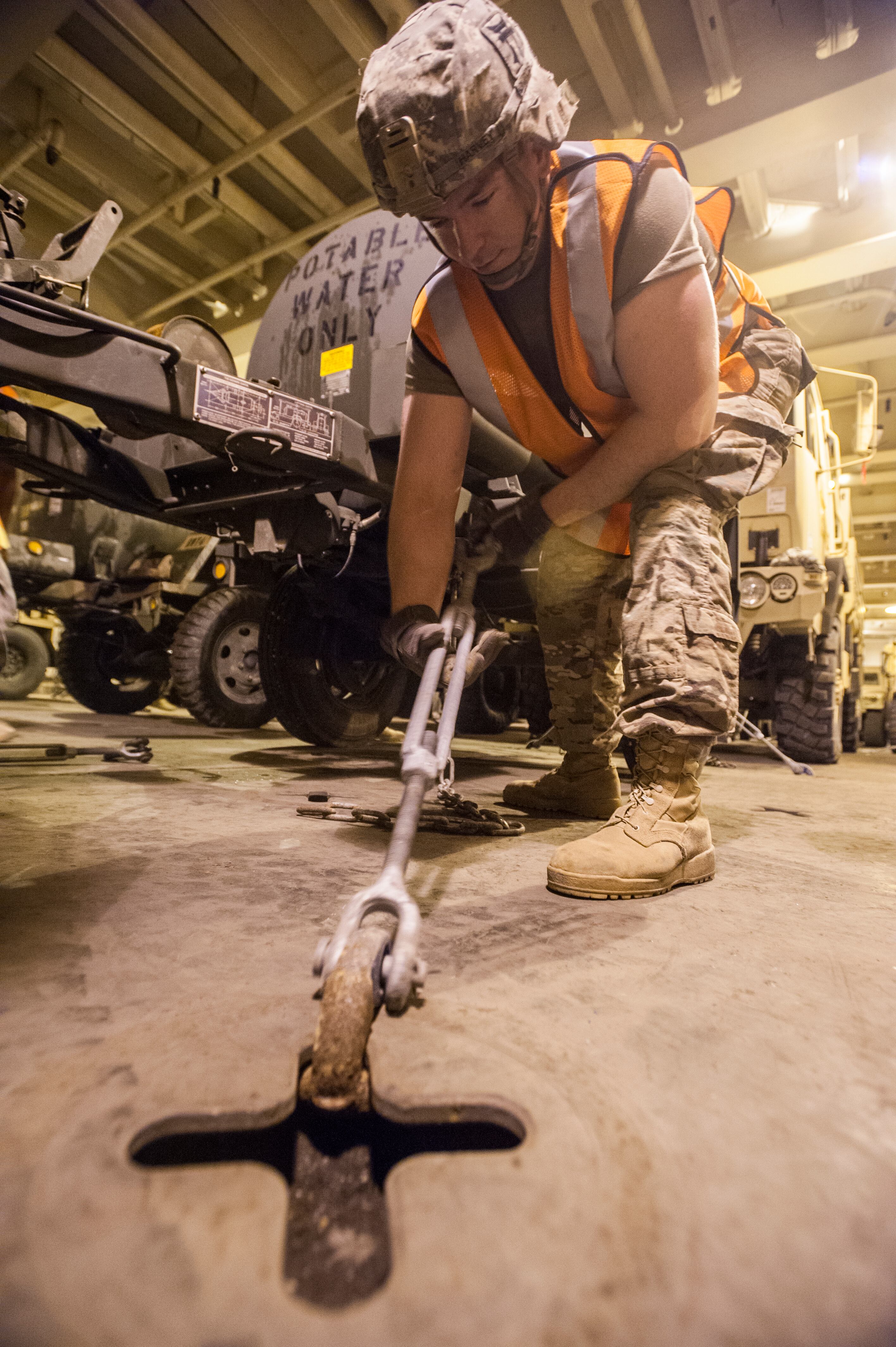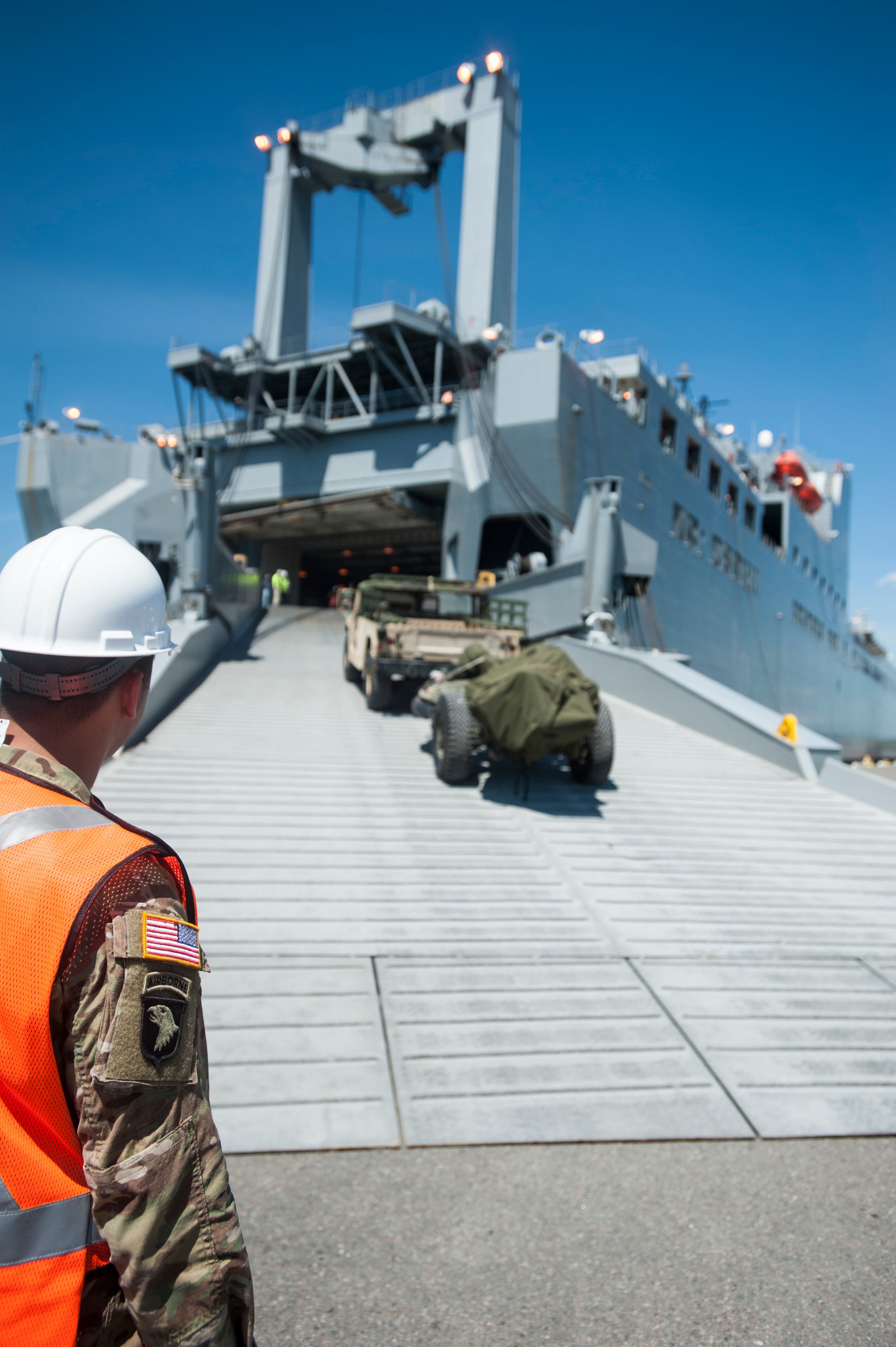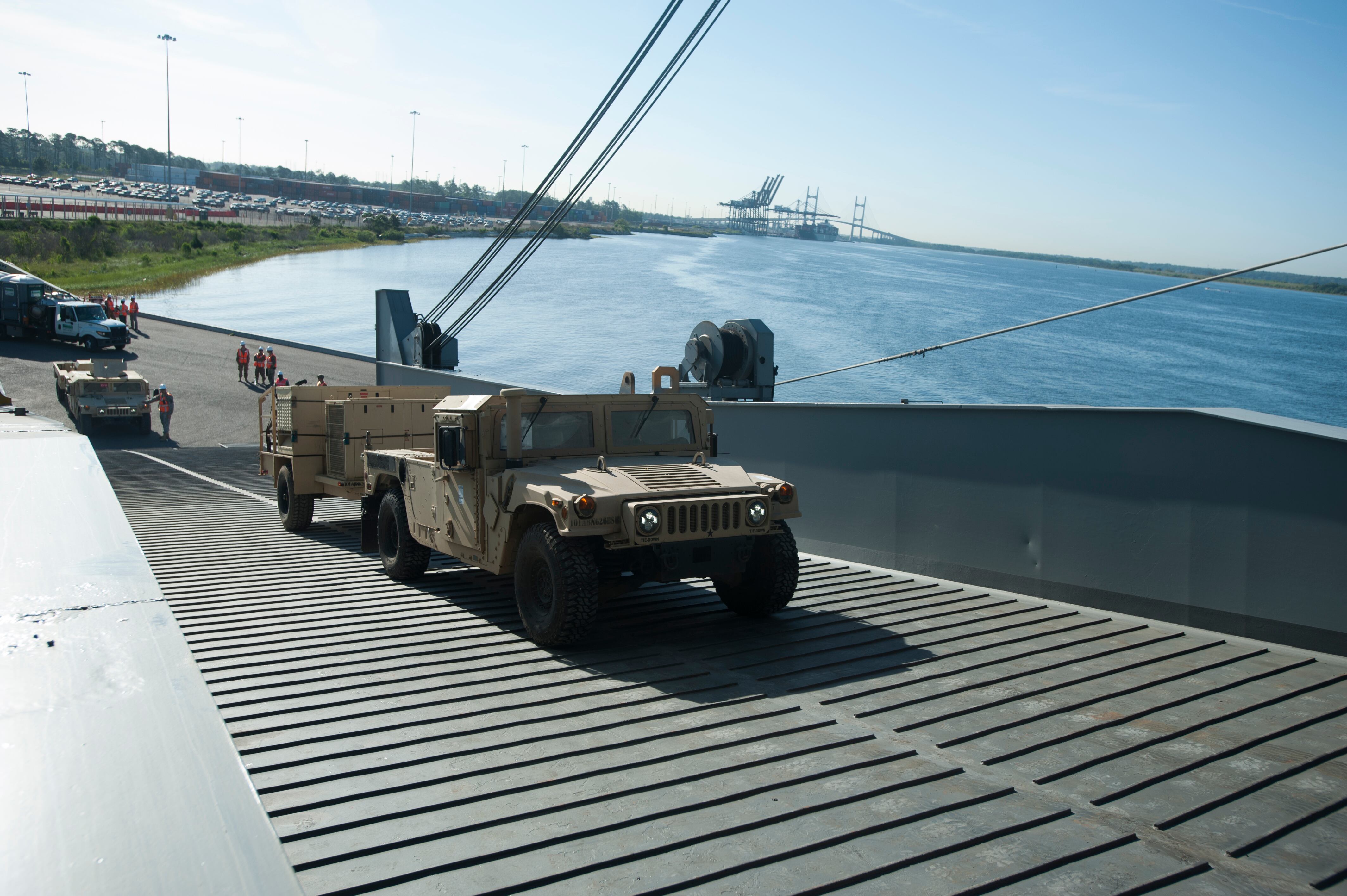Soldiers from the 101st Airborne Division recently found out what it takes to load a brigade combat team's worth of equipment onto a ship as part of the first Sealift Emergency Deployment Readiness Exercise the Army has conducted in years.
Wilson described the process as trying to put together "a big puzzle.""The biggest part was trying to figure out how to fit all 900 awkwardly-shaped pieces onto that ship and then how to pull them off," said Maj. Jared Wilson, the executive officer for 2nd Battalion, 506th Infantry Regiment, which is part of the 101st Airborne’s 3rd BCT.
The exercise was "different because we haven't done this in quite a long time," he said. "It requires a lot of attention to detail, it requires a lot of specific training."
The Sealift Emergency Deployment Readiness Exercise was the first of its kind since the wars in Iraq and Afghanistan. It was centered on getting the 101st Airborne's 3rd Brigade Combat Team from Fort Campbell, Kentucky, to the Joint Readiness Training Center at Fort Polk, Louisiana, for the brigade's combat training center rotation.
It also is part of a growing push by the Army to conduct more brigade-level Emergency Deployment Readiness Exercises, or EDREs, as it works to rebuild its ability to deploy quickly anywhere in the world.
For the last 15 years, the Army has conducted back-to-back Iraq and Afghanistan deployments, but soldiers typically rotated in and out of already-established theaters and fell in on equipment that was already in place. But as the Army transitions out of those two theaters and prepares for contingencies around the world, the service must realign its focus and continue sharpening these perishable skills, Army leaders have said.
"These exercises are important because they really demonstrate the fact that we're an expeditionary Army now," said Brig. Gen. Christopher Sharpsten, commanding general of the 3rd Expeditionary Sustainment Command. "We have to be able to maintain readiness at home station but [also] deploy that combat power on short notice. There's really no other nation in the world with the capability to launch combat power like we do globally. It reassures our friends and allies and deters our adversaries."

A soldier from 3rd Brigade Combat Team, 101st Airborne Division secures a Humvee in the cargo hold of the U.S. Naval Ship Benevidez in Jacksonville, Fla., April 20, 2016.
Photo Credit: Staff Sgt. Joel Salgado/Army
The SEDRE also was an opportunity for the Army to bring together several layers and components of the military — from the brigade combat team all the way up to Military Sealift Command — for one exercise, Sharpsten said.
"The beauty of this exercise is it replicated what we do when we do a real-world operation," he said. "If you think about us going into Kuwait, or you think about us going into Liberia, or you think about some of the other hot spots in the world where we launch combat power, this is how we do it. And it's a task we need to be proficient on."
There were some initial hiccups, Sharpsten said, but the exercise, overall, went smoothly and without any injuries.
"Loading a ship is not the same as loading a train," he said.
There is paperwork, customs, safety requirements, and "those things take some practice," he said.
An exercise like this also requires a lot of planning, Sharpsten said.
"What are the load plans that go into loading a ship? What's the center of balance? Can you put the heavy equipment on the upper decks? Simple things like where do we put the maintenance equipment? Is it the last on or the first on the ship?" he said. "That's just a small lesson that our brigades relearning now."
In all, the soldiers involved in the SEDRE — from the 3rd ESC, the 101st Sustainment Brigade and the division's 3rd BCT — moved 891 pieces of equipment, Sharpsten said. Of those, there were 674 vehicles and trailers, while the rest were containers or smaller packages.

A soldier from 3rd Brigade Combat Team, 101st Airborne Division watches a Humvee pull an M119A3 Howitzer onto the U.S. Naval Ship Benevidez for the brigade's Sealift Emergency Deployment Readiness Exercise.
Photo Credit: Staff Sgt. Joel Salgado/Army
To kick off the SEDRE, soldiers from the 101st Airborne loaded up their equipment for rail transportation to Jacksonville, Florida. There, it took them about 30 hours to load the USNS Benavidez, a large, medium-speed, roll-on/roll-off vessel from the Navy's Military Sealift Command that's designed to transport containerized cargo and rolling stock between ports.
The ship then sailed to Port Arthur, Texas, where soldiers from the 101st Sustainment Brigade's 129th Combat Sustainment Support Battalion were waiting.
The unit helped download the vehicles and equipment from the ship, and it set up a logistics support area for the soldiers from 3rd BCT who were arriving to reclaim their trucks and containers, said Maj. Hank Coleman, the support operations officer for the 129th. This included sleep areas, shower and bath facilities, and areas for field feeding, he said.
The sustainment brigade has some recent experience with port operations, Coleman said.
"We actually just did something very similar to this while the brigade was deployed to Liberia in 2014," he said, referring to the 101st Airborne's deployment to help stop the spread of Ebola.
But because the Army hasn't conducted a SEDRE is years, the exercise was a good opportunity for his soldiers, Coleman said.
"It's been a great experience," he said. "It's something a lot of them haven't done before, so it's adding to the training they've already done and taking it to the next level."
The USNS Benevidez arrived at Port Arthur on April 25, and the soldier's got to work that same evening, Coleman said.
It took about 15 hours to unload all the vehicles, Wilson said.
Once all the vehicles were on the ground, soldiers from 3rd BCT began rolling out in five, 100-vehicle convoys for the 130-mile drive to Fort Polk.
The SEDRE provided 3rd BCT with holistic training even before it arrived at JRTC, Wilson said.
"There's a lot logistically that has to happen before soldiers get into the fight," he said. "All of that was practiced in this exercise."
Michelle Tan is the editor of Army Times and Air Force Times. She has covered the military for Military Times since 2005, and has embedded with U.S. troops in Iraq, Afghanistan, Kuwait, Haiti, Gabon and the Horn of Africa.




